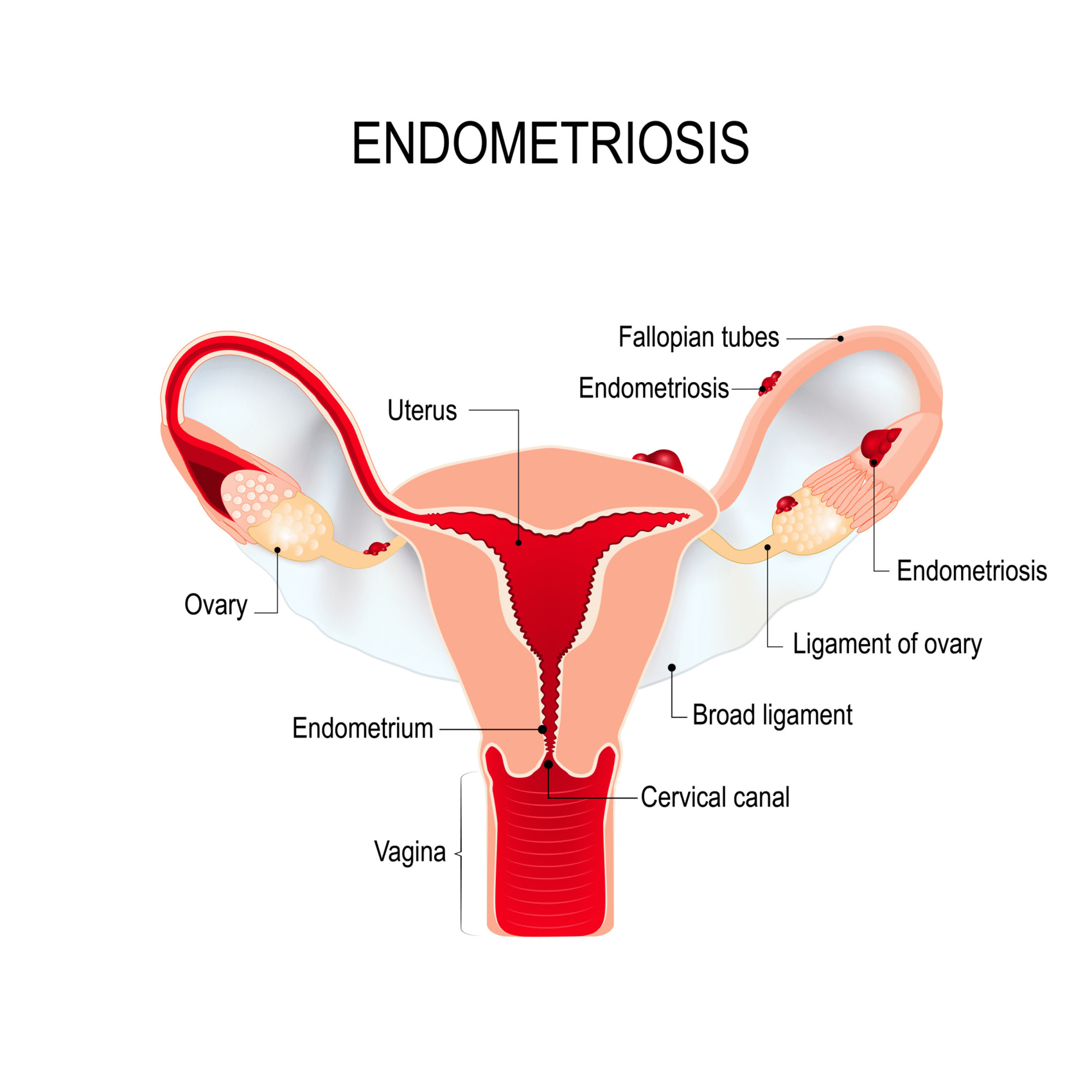It’s Endometriosis Awareness Month: Facts & Infographic
Despite the fact that 176 million women globally are affected by endometriosis, awareness around this condition is still very little. In order to improve knowledge and research for endometriosis at a global level, many events are taking place in March around the world. From March 3 to 9, it’s Endometriosis Awareness Week in the UK, during which several events are organized to raise funds and improve women’s lives. On March 25, EndoMarch - the 4th worldwide march organized by endometriosis patients and patient advocates - will take place to end the silence for endometriosis. The event occurs on the same day in different countries across the globe and has hundred thousands attendees every year.
With this post, we would like to shed some light on the still little-known and often misdiagnosed disease, and look at the figures on a global scale.

What is Endometriosis?
Endometriosis is a condition where a tissue similar to the lining of the uterus (called “the endometrium”) is found elsewhere in the body. The condition causes this tissue to grow on the ovaries, the fallopian tubes, or the outer wall of the uterus. In rare cases, the cells grow in other parts of the body, such as the bladder, the intestines, or the lungs. It induces a chronic inflammatory reaction that may result in scar tissue or cysts.
The average time for a woman to be correctly diagnosed with endometriosis is an astounding 10 years. This is largely due to the fact that pelvic pain and symptoms are often belittled or blamed on normal aspects of menstrual pain. In fact, 68% of women with endometriosis were initially misdiagnosed with another condition.
The infographic below shows world statistics about endometriosis.
Endometriosis in numbers: How many women are affected globally, and how?

What are the Symptoms?
The most common symptoms include:
Painful periods
Chronic pelvic pain
Abnormal bleeding
Difficulty with getting pregnant
Painful sexual intercourse
Symptoms vary between women. Pain intensity can be different from month to month and some women may feel pain constantly or only during their periods, while having sex, or when they go to the toilet. As shown in the infographic, endometriosis may also cause infertility in 30% to 50% of women affected.

What are the treatments available?
While there is no cure for endometriosis, there are treatments that can help treat the symptoms associated with endometriosis. Still, most treatments cannot be considered long-term solutions due to their side effects. The most common treatments include:
Over-the-counter or strong prescription pain medications to relieve pain caused by endometriosis.
Hormone treatments: although hormones are not a permanent fix for endometriosis, they can treat endometriosis-associated pain effectively. Hormones stop the ovaries from producing hormones, including estrogen, thus preventing ovulation. As a consequence, this may help slow the growth of the endometrium and scar tissues. Hormone treatments include birth control pills, progestin, and danazol treatment.
Laparoscopy procedure: this is the most common procedure to treat and diagnose endometriosis. During a laparoscopy, the doctor will make a small incision to insert surgical instruments to look for signs of the condition or to remove any visible scar tissue or cysts that may cause pain or infertility.
In severe cases of endometriosis, hysterectomy may be a viable option for those women whose pain is uterine in origin.
A hysterectomy is an operation to remove the uterus. While hysterectomy may put an end to the symptoms of endometriosis, such as pain, it cannot be guaranteed that it would work for every case. There are different factors that increase the chances of endometriosis to remain active, such as whether or not ovaries were removed or the severity of the disease. It is recommended to look at all the other possibilities with due time and discuss all your options with your doctor or gynecologist before taking a decision.
Where can I learn more about Endometriosis?
Here are useful resources to read and learn more about endometriosis:
Endometriosis Support Organizations World Endometriosis Research Foundation World Endometriosis Society International Federation of Gynecology and Obstetrics Asian Society of Endometriosis & Adenomyosis
Who is Qunomedical?
Qunomedical helps you find the best clinics and doctors worldwide. Contact our team of Health Managers to receive a free quote for any treatment you may need! From dentistry and plastic surgery to orthopedics and weight loss surgery, we've got you covered!
Fair Use
If you liked what you've learnt about endometriosis and its world statistics, feel free to share our infographic as you wish. We simply ask that you link back to this page to credit the content's authors.
FIND THE RIGHT SPECIALIST AT A FRACTION OF THE COST.
Qunomedical lists only the top clinics and doctors in the world. Contact us for your free quote.
Disclaimer
The information in this article is for educational purposes only and does not replace medical advice. Always consult your doctor before starting any treatments.

Patient manager
Frieda
Your personal Patient Manager
Let's talk
Still unsure? Feeling overwhelmed? Talking to a real person can give you the guidance and reassurance needed. You don’t have to do it alone. Let’s find the right doctor together.
